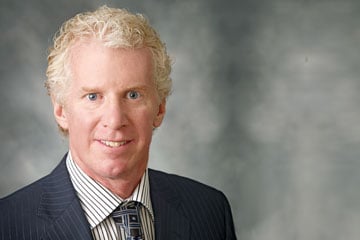
Lawyers’ groups in Ontario are hoping the Ministry of the Attorney General will move forward in the months ahead to reform and expand the simplified procedure process to try to reduce the backlog in the civil courts.

Lawyers’ groups in Ontario are hoping the Ministry of the Attorney General will move forward in the months ahead to reform and expand the simplified procedure process to try to reduce the backlog in the civil courts.
“We all recognize that changes are needed,” says Michael Winward, the newly elected chairman of the Federation of Ontario Law Associations.
“We would like the attorney general to come out and specifically state the changes she is considering to the process and then ask for feedback. The ball is in their court,” adds Winward, a partner at Mackesy Smye LLP in Hamilton, Ont.
Ron Bohm, president of the Ontario Trial Lawyers Association, agrees that proposals such as increasing the maximum claim that can proceed under Rule 76, which sets out the rules for simplified procedure trials, would be beneficial.
“From our perspective, we would like to see the government move forward with changes. It is necessary to be careful, though. The devil is in the details,” says Bohm, a partner at Blackburn Lawyers in Richmond Hill, Ont.
The provincial Civil Rules Committee began consultations in October 2016 on reforms to the simplified procedure provisions.
Last fall, it approved proposals in principle and it will meet again on the final wording to be sent to Attorney General Caroline Mulroney.
The suggested changes would double the maximum claim under the simplified procedure to $200,000 from $100,000.
Costs awards would be capped at $50,000 and disbursements at $25,000. A three-expert maximum under the Evidence Act should be “rigorously applied.”
The length of trials under Rule 76 would be “strictly limited” to five days and examination-in-chief should be done by way of affidavit.
Finally, the right to a jury in a simplified procedure trial would be eliminated under the committee’s proposals.
The Courts of Justice Act grants the committee the authority to make rules related to “practice and procedure” of civil proceedings in the Superior Court and Court of Appeal “subject to the approval” of the attorney general.
If accepted, many of the changes could be put into place by the province through regulation.
Some, such as eliminating the right to a jury in a Rule 76 trial, would require legislation to be enacted.
“Attorney General Mulroney is committed to improving the justice system so that litigants can fairly resolve their disputes faster and more affordably,” says a spokesman for the ministry.
“She is actively reviewing the Rules Committee’s proposed reforms to simplified procedure and has been discussing them with members of the bar.”
The changes were also raised at a Jan. 31 meeting called by Chief Justice of Ontario George Strathy to “brainstorm” on ideas to improve the administration of the courts in the province. Representatives of lawyers’ groups were in attendance as was Mulroney.
Bohm and Winward say they were encouraged by the reaction of the attorney general to their comments on this issue.
“I think she is very engaged with it,” says Bohm.
“The question is how bold are we going to get,” says Winward.
He believes the simplified procedure maximum claim could actually be increased to $500,000.
“I don’t think $200,000 is enough to get many more cases into simplified procedure,” he says. However, he stresses that increasing the maximum even more requires procedural safeguards for both plaintiffs and defendants.
“You have to retain discretion with the trial judge. As long as the process is fair, the province could save a lot court time and money,” says Winward.
Perhaps the most contentious of the potential changes is removing the right to a jury in a Rule 76 trial.
Roger Chown, a partner at Carroll Heyd Chown LLP in Barrie, Ont., says he agrees with many of the proposals except on the jury issue.
“This is a long-standing right. There is no other way for you to get the public sensibility or its involvement in the decision-making process,” says Chown, who is also a director of the Canadian Defence Lawyers organization.
Chown agrees that, in the area of personal injury litigation, there is a split between the plaintiff and defence side when it comes to juries in these cases.
“A lot of insurers want a jury. They tend to get better results,” he says.
“I understand that trials may move more quickly when there is not a jury. But you still have to hear all the evidence. It takes longer, but not a whole lot longer,” says Chown.
Bohm agrees that the plaintiff bar in personal injury cases is generally in support of removing the right to a jury for simplified procedure trials.
“It is very difficult to finish any jury trial in less than three weeks,” says Bohm.
He also questions whether it is appropriate to ask the public to give up this much of its time for civil cases that are not the most serious in terms of the injuries at issue.
“The right to a jury trial should be subject to proportionality. They should still be permitted in major cases,” Bohm says.